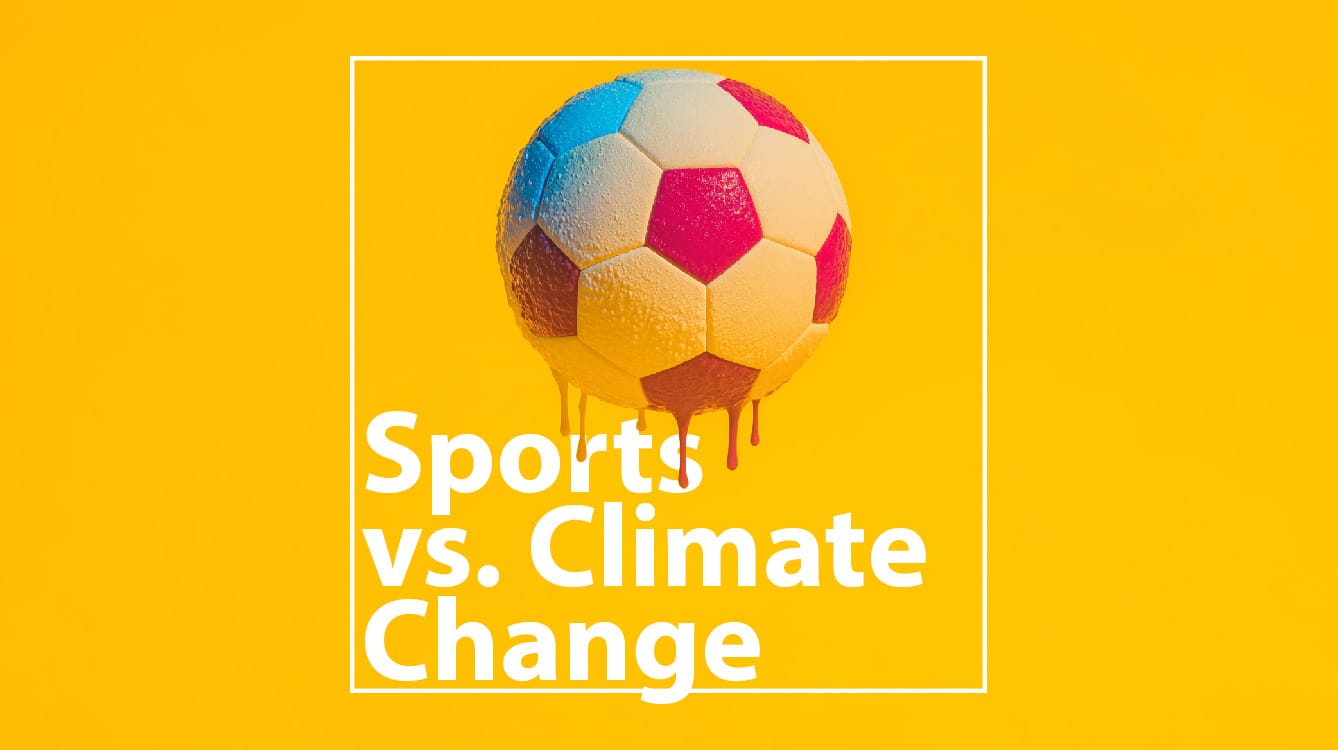Sport is often claimed to be a form of escapism, but recent news from sporting events like Wimbledon and the FIFA Club World Cup have also put it on the front lines of inescapable climate change. From heatwaves and storms to athlete and spectator health, climate is disrupting athletics at all levels.
This year, heat has already disrupted the start times and schedules for the FIFA Club World Cup with on the field temperatures seen to rise beyond 90f. FIFA continued ‘cooling breaks’ for players each half, but even with these players like Marcos Llorente describe the conditions as ‘impossible, terribly hot’. Borussia Dortmund’s substitutes stayed in the locker room until the half due to heat during one game, a situation described by the team as ‘something they’ve never seen before’. This crisis carries on from last year’s Copa America, in which heat in Kansas City caused an assistant referee to collapse.
Beyond players, reports are emerging that venues themselves are under threat. A 2024 report claims that 1 in 4 English football stadiums will experience partial or total flooding by 2050 due to weather and rising sea levels. American stadiums aren’t spared as well, with MetLife stadium (home to the upcoming FIFA Club World Cup and World Cup Finals), Citi Field and others projected to experience significant flooding.
With news that next year’s World Cup final is considered to start at 9am due to heat and Wimbledon players giving out water to spectators due to temperatures, climate change has and will continue to take center stage in sport. However, can this greater focus translate into greater engagement with the issue? What role could brands and sponsors play in evolving the climate change narrative through sports, especially during next year’s World Cup?
The Age of ‘What’ Not ‘If’
The opportunity for sports is not to convince fans of the risk of climate change, but to urge them to consider what can be done. Both the public and athletes see how their world is being affected by climate change. 85% of athletes recently said that athletics has been affected by climate change. 73% of Americans and 87% of the British public believe climate change is real and over 45% believe it is caused at least in part by human action.
The public’s current barrier to action is less an understanding of the risk and more a lack of understanding in what should be done and why. While 64% of respondents globally, per a recent IPSOS survey, said that if ‘individuals like me fail to act on climate change, we will be failing future generations’ – the number of respondents agreeing has decreased from 2021 (down from 69% of respondents within G7 markets in 2021 to 56% in 2025). A diffusion of individual responsibility, worry about the economic costs of action and a hope that someone else will act have kept worry from becoming actionable.
Sports Are Adapting, Will Fans?
While humans may be individually less likely to act on climate anxiety, sports leagues aren’t. With an estimate that 20% of Olympic nations are at risk of losing their sporting cultures by 2030 due to climate change and impact manifesting across leagues, inaction isn’t an option – even in the face of financial challenges.
As marathons move locations and times into the evening, sustainability initiatives are launched and new safety measures put in place for athletes, sports bodies are acting in a way individuals need to match. Whereas ‘stick to sport’ style complaints may previously see environmental action as a distraction, it is rapidly becoming core to sporting survival.
World Cup 2026: A Brand’s Opportunity to Turn Disruption Into Action?
FIFA’s 2026 World Cup can serve as a tipping point in how fans think about climate change through sport, if it can be properly supported, especially from the brands and sponsors around it. Previous World Cups have struggled with addressing extreme weather in an authentic and clear way. 2022’s host Qatar experienced extreme weather, but its climate and air conditioned outdoor stadiums left any messaging too mired in contradictory feelings and information to cut through.
However, 2026’s location across North America, at a time where weather delays, extreme heat and player health will be key stories in the tournament is an unavoidable opportunity. FIFA’s perception as a biased and opportunistic organization limits its ability to lead anxious fans in climate action. In the US’ current political climate, teams and leagues may be pressed to ‘get on with the game’, but advertisers are less bound by this line of thinking.
Climate is creating a moment that brands can use to turn disruption into a shared moment for fans. For brands with sustainability credentials or aspirations, a moment where sports fans are waiting for play to start, experiencing delays or simultaneously viewing the impact of climate on the game they love is an opportunity to nudge fans towards action.
Whereas trying to speak about sustainability during sport viewing would previously be a distraction, climate’s increasing disruption of sport ties the two together into a natural opportunity. However, brands have to do more with it than make vague claims or commitments, instead giving new ways for fans to act and resolve some of the anxiety they will experience. The examples of climate change will be stark and clear, so brand’s responses must be as well.
From Global Celebration to Global Collaboration
The greatest barrier to this opportunity may be the sponsorship structure FIFA has built around the tournament. Access to many of the key moments where climate impacts sport are limited to sponsors, so the opportunity to do more with the moment falls most to these brands. Whereas the sponsorship playbook has been to safeguard a massive investment in the language of celebration, they need to now think about collaboration. Talking only about a party, as the house around it catches fire – is in itself, a risk.
Visa can celebrate being the payments partner for the 2026 tournament, but it would gain more by creating shared donation schemes to fight climate change. Coca-Cola can release another song about the global party the tournament stands for, but it can go further to talk about steps we can all take to ensure that party keeps going.
As one of the largest viewed sporting events on Earth, the World Cup has historically offered attention for brands at a global scale. Now, it increasingly offers the context to talk about an issue that affects us all, as we gather together to watch and see evidence of it. For brands that claim to want to change the world for the better, the opportunity is there if they, like the players in the tournament, can rise to the occasion.





